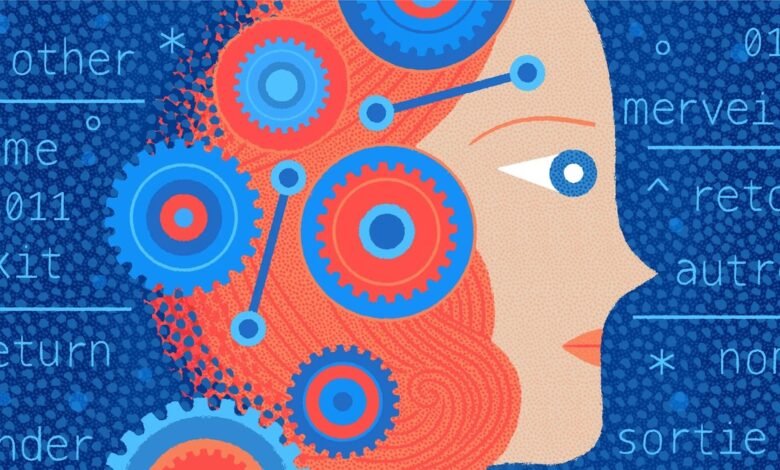Everything You See Is a Computational Process, If You Know How to Look

The original version of this story appeared in Quanta Magazine.
In the movie Oppenheimer, Niels Bohr challenges the physicist early in his career:
Bohr: Algebra is like sheet music. The important thing isn’t “can you read music?” It’s “can you hear it?” Can you hear the music, Robert?
Oppenheimer: Yes, I can.
I can’t hear the algebra, but I feel the machine.
I felt the machine even before I touched a computer. In the 1970s I awaited the arrival of my first one, a Radio Shack TRS-80, imagining how it would function. I wrote some simple programs on paper and could feel the machine I didn’t yet have processing each step. It was almost a disappointment to finally type in the program and just get the output without experiencing the process going on inside.
Even today, I don’t visualize or hear the machine, but it sings to me; I feel it humming along, updating variables, looping, branching, searching, until it arrives at its destination and provides an answer. To me, a program isn’t static code, it’s the embodiment of a living creature that follows my instructions to a (hopefully) successful conclusion. I know computers don’t physically work this way, but that doesn’t stop my metaphorical machine.
Once you start thinking about computation, you start to see it everywhere. Take mailing a letter through the postal service. Put the letter in an envelope with an address and a stamp on it, and stick it in a mailbox, and somehow it will end up in the recipient’s mailbox. That is a computational process—a series of operations that move the letter from one place to another until it reaches its final destination. This routing process is not unlike what happens with electronic mail or any other piece of data sent through the internet. Seeing the world in this way may seem odd, but as Friedrich Nietzsche is reputed to have said, “Those who were seen dancing were thought to be insane by those who could not hear the music.”
This innate sense of a machine at work can lend a computational perspective to almost any phenomenon, even one as seemingly inscrutable as the concept of randomness. Something seemingly random, like a coin flip, can be fully described by some complex computational process that yields an unpredictable outcome of heads or tails. The outcome depends on myriad variables: the force and angle and height of the flip; the weight, diameter, thickness, and distribution of mass of the coin; air resistance; gravity; the hardness of the landing surface; and so on. It’s similar for shuffling a deck of cards, rolling dice, or spinning a roulette wheel—or generating “random” numbers on a computer, which just involves running some purposely complicated function. None of these is a truly random process.
The idea goes back centuries. In 1814, in his Philosophical Essay on Probabilities, Pierre-Simon Laplace first described an intelligence, now known as Laplace’s demon, that could predict these outcomes:
Source link




